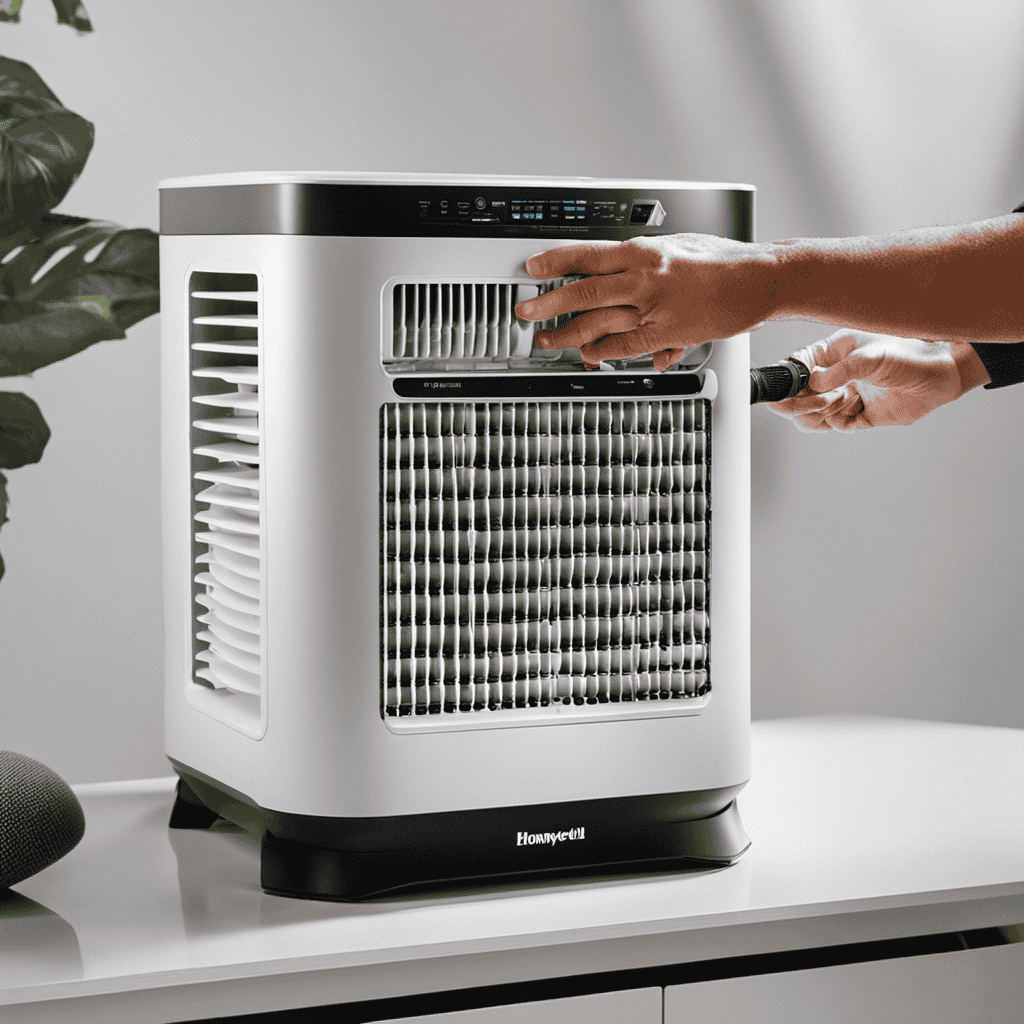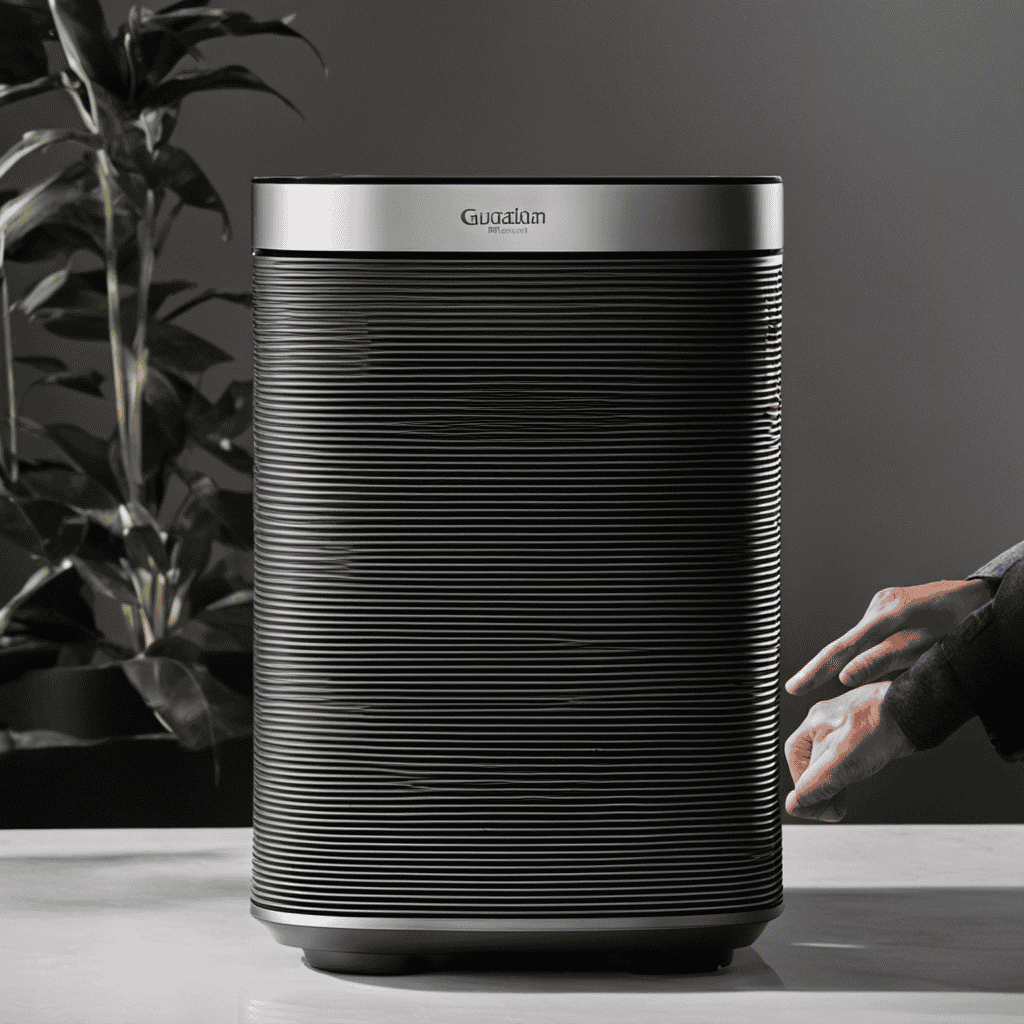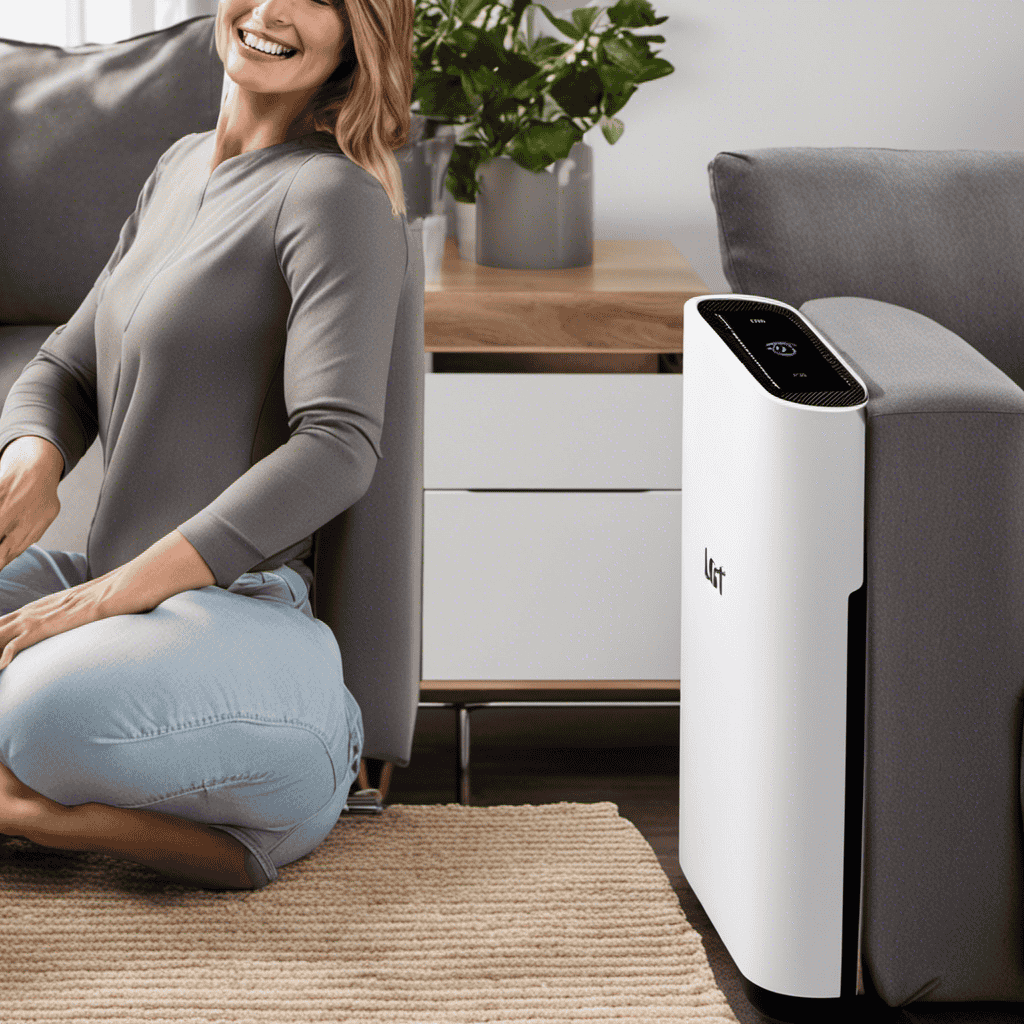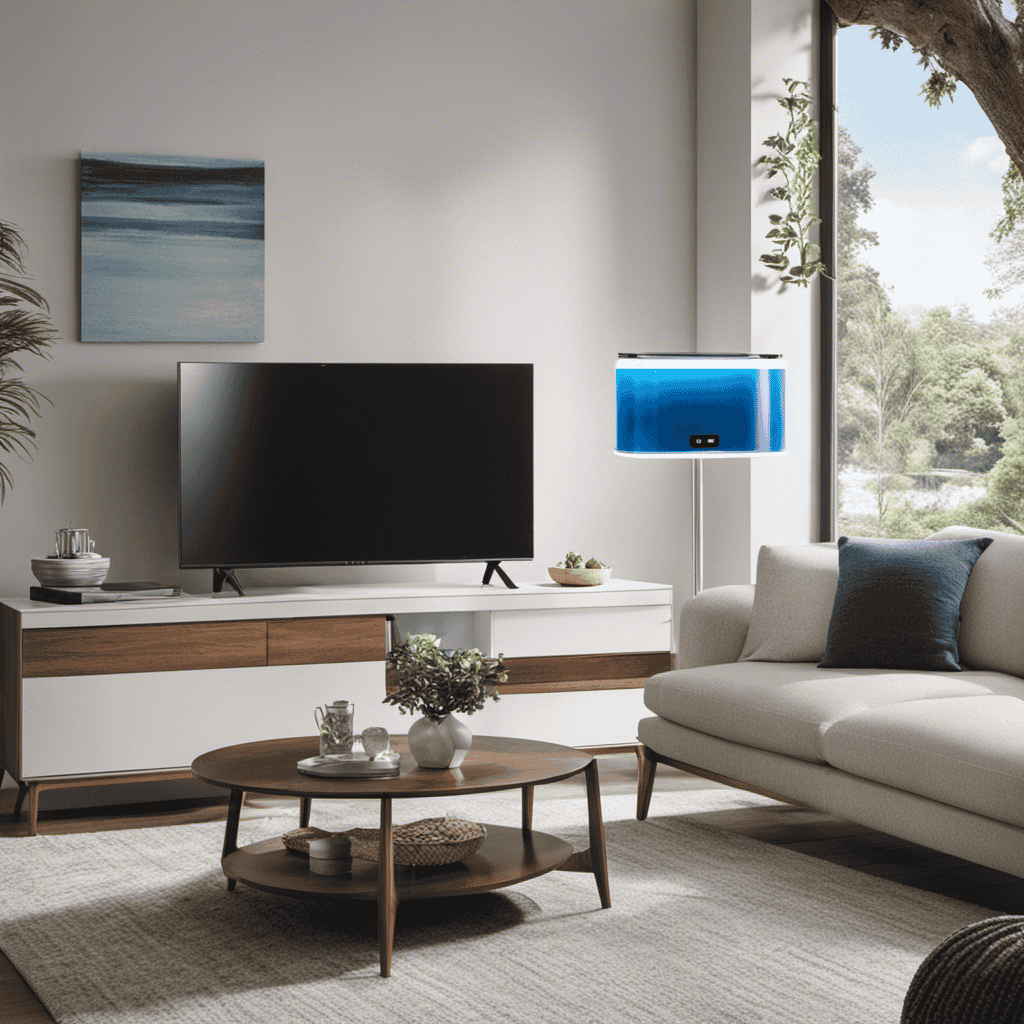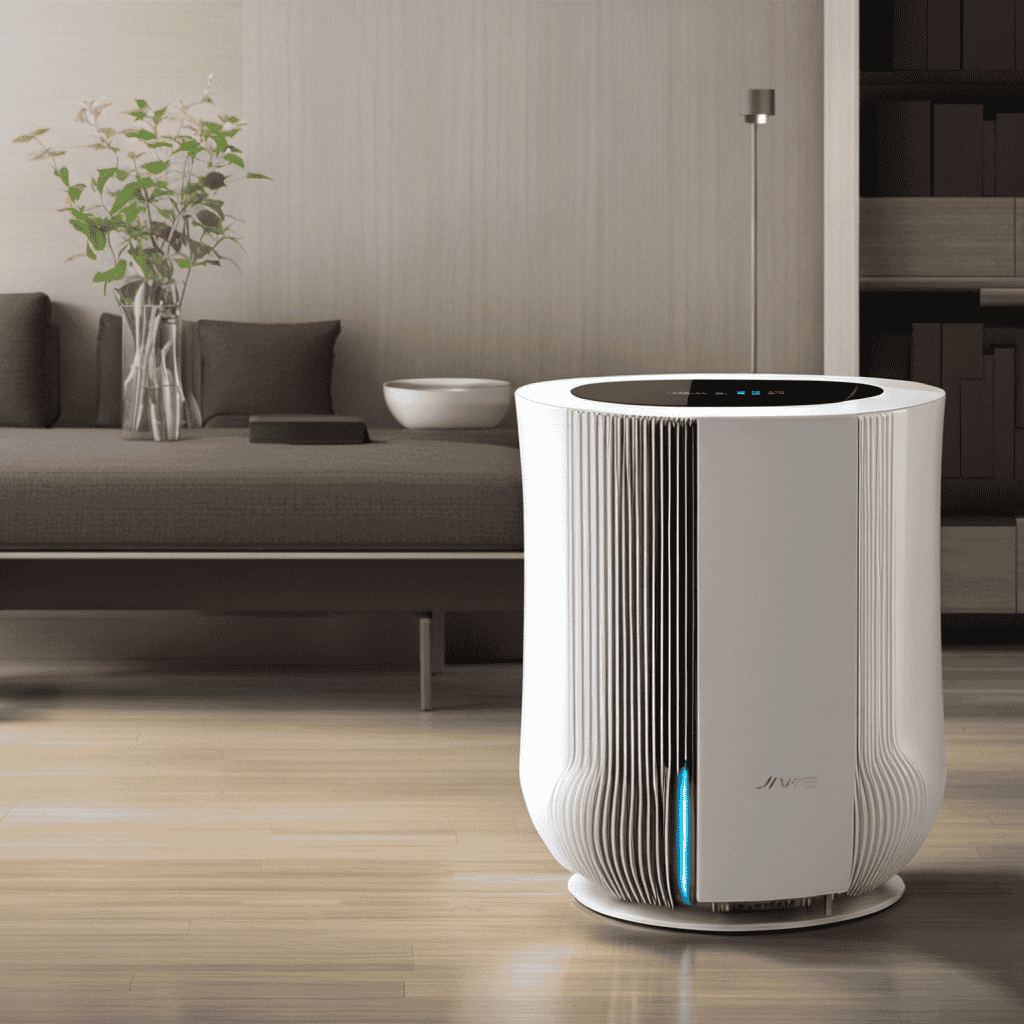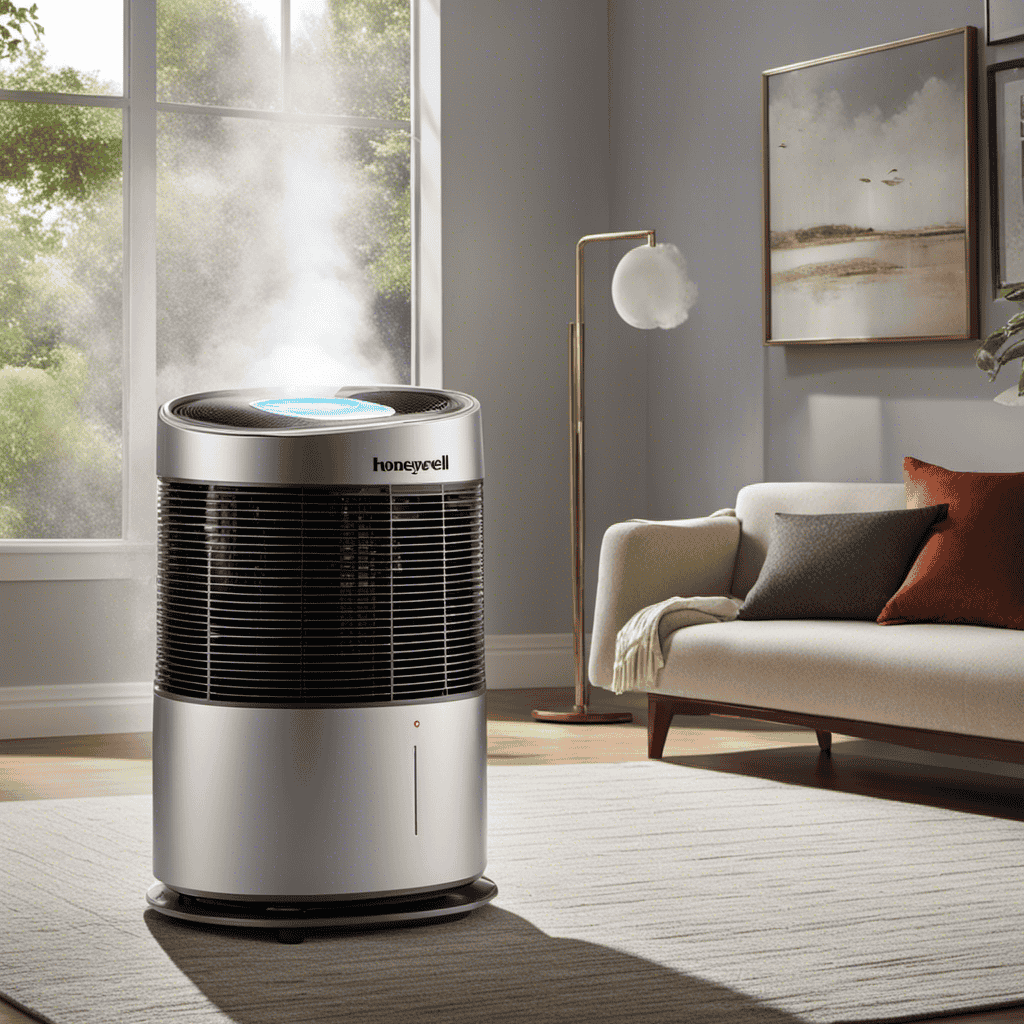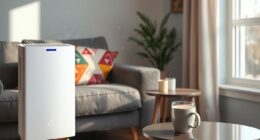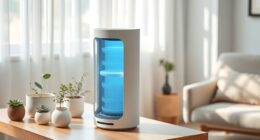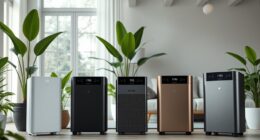Oh, the annoyance of a faulty air purifier! But don’t worry, I’m here to help you troubleshoot and repair your Honeywell air purifier.
In this detailed and informative article, I will show you how to troubleshoot common issues, clean and replace filters, repair the fan motor, fix electrical connections, address noisy operation, and replace faulty sensors.
So, let’s roll up our sleeves and get that purifier working like new again!
Key Takeaways
- Regular maintenance and cleaning can prevent unpleasant odor and decreased performance in Honeywell air purifiers.
- Proper filter replacement is crucial for maintaining clean and healthy air.
- Repairing the air purifier may involve checking for loose or damaged wires, inspecting the motor, and replacing worn-out parts.
- Fixing electrical connections may require checking and tightening loose connections, inspecting for damage or disconnection in the wires, and testing the voltage with a multimeter.
Troubleshooting Common Issues
If your Honeywell air purifier isn’t working properly, there are a few common issues you can troubleshoot.
One of the most common problems is an unpleasant odor coming from the purifier. This can be caused by a dirty or clogged filter. To fix this, simply remove the filter and clean it according to the manufacturer’s instructions.
Another issue you might encounter is a decrease in air purifier performance. This could be due to a dirty fan or a buildup of dust and debris inside the unit. In this case, you should clean the fan and the internal components of the purifier to restore its performance.
Regular maintenance and cleaning can help prevent these issues and keep your Honeywell air purifier running smoothly.
Cleaning and Replacing the Filters
When it comes to maintaining the filters in your air purifier, proper maintenance is crucial.
Regularly cleaning and replacing the filters not only ensures optimum performance but also prolongs the lifespan of your device.
It is important to understand the recommended filter replacement frequency for your specific model to maintain clean and healthy air in your surroundings.
Proper Filter Maintenance
To properly maintain the filters in your Honeywell air purifier, you’ll need to regularly clean or replace them. Maintaining air quality is crucial for a healthy living environment, and the filters play a significant role in this process.
Over time, dust, allergens, and other particles accumulate on the filters, reducing their effectiveness. Regular cleaning prevents the build-up of these contaminants and ensures that the air purifier can continue to remove them from the air.
Additionally, regular filter maintenance is essential for preventing mold growth. Moisture can accumulate on dirty filters, creating a favorable environment for mold to thrive. By keeping the filters clean, you can minimize the risk of mold growth and maintain a healthier indoor environment.
Now, let’s discuss the frequency at which you should replace the filters.
Filter Replacement Frequency
Regularly cleaning or replacing the filters is important for maintaining optimal air quality in your home. Using HEPA filters in your air purifier provides several benefits.
HEPA filters are highly efficient at capturing microscopic particles, such as dust, pollen, pet dander, and even some bacteria and viruses. This helps to improve the overall air quality, reducing the risk of allergies and respiratory issues.
To extend the lifespan of your air purifier filters, it is recommended to vacuum or wash them regularly, depending on the type of filter. This removes any accumulated dirt and debris, allowing the filters to function effectively for a longer period of time.
By properly maintaining and replacing your air purifier filters, you can ensure that your home continues to have clean and fresh air.
Now let’s move on to repairing the fan motor.
Repairing the Fan Motor
When it comes to troubleshooting motor issues, there are a few key tips that I’ve found helpful.
First, check for any loose or damaged wires that may be causing a malfunction.
Next, inspect the motor for any signs of wear or damage, such as excessive heat or unusual noises.
If necessary, replacing worn-out parts can often solve the problem and restore the motor’s functionality.
Motor Troubleshooting Tips
If your Honeywell air purifier’s motor is not working, you’ll want to check if it’s properly plugged in. However, if it is plugged in and still not running, there could be other issues at play. One common problem is noise coming from the motor. This can be caused by a buildup of dust and debris, which can affect the motor’s performance. To troubleshoot noise issues, it is recommended to clean the motor regularly using a soft brush or vacuum. Additionally, proper motor maintenance is essential for its longevity. Here are some motor maintenance tips:
| Motor Maintenance Tips |
|---|
| 1. Regularly clean the motor using a soft brush or vacuum. |
| 2. Check for any loose or damaged parts and replace if necessary. |
| 3. Lubricate the motor bearings with a few drops of oil every six months. |
| 4. Avoid overloading the motor by not running the air purifier for extended periods of time. |
Replacing Worn-Out Parts
To replace worn-out parts, you’ll need to carefully remove the damaged components and install new ones in their place. This process ensures that your Honeywell air purifier continues to function optimally.
Here are the steps to follow:
-
Inspect the housing: Check for any signs of damage or wear in the housing. If there are cracks or breaks, you’ll need to repair or replace the housing before proceeding.
-
Remove the control panel: Carefully detach the control panel from the unit by unscrewing the screws or releasing the clips holding it in place.
-
Replace damaged components: Identify the specific parts that need replacement, such as filters, fans, or motors. Follow the manufacturer’s instructions to safely remove the old parts and install the new ones.
-
Reassemble the unit: Once all the necessary parts have been replaced, reattach the control panel and secure it back onto the unit.
Fixing Electrical Connections
You’ll need a screwdriver to check and tighten any loose electrical connections.
Start by unplugging the air purifier from the power source to ensure your safety.
Next, remove the back panel of the unit using the screwdriver.
Carefully inspect the wires for any signs of damage or disconnection.
If you find any loose wires, use wire strippers to remove the insulation and reconnect them securely.
Make sure to match the colors of the wires properly.
Once all the wires are securely connected, check the power supply.
Use a multimeter to test the voltage and ensure that it is within the specified range.
If the power supply is faulty, you may need to replace it.
Addressing Noisy Operation
When troubleshooting a noisy air purifier, start by checking if the fan blades are clean and free from debris. If the blades are dirty, use a soft brush or cloth to gently clean them.
Additionally, make sure the air purifier is securely placed on a stable surface to reduce vibration noise.
Here are some steps to troubleshoot power issues and reduce vibration noise:
-
Check the power cord and ensure it is securely connected to both the air purifier and the power outlet.
-
Inspect the power outlet and make sure it is functioning properly by testing it with another device.
-
If the air purifier has a removable filter, check if it is properly installed. A loose or incorrectly positioned filter can cause vibration noise.
-
Consider placing the air purifier on a rubber mat or using vibration dampening pads to minimize noise caused by vibrations.
Replacing Faulty Sensors
If your air purifier is experiencing issues with its sensors, start by contacting customer support for assistance. Sensor calibration is crucial for the proper functioning of an air purifier. However, sensor malfunctions can occur due to various reasons such as dust accumulation or electrical faults.
To diagnose and replace faulty sensors, follow the steps below:
- Turn off the air purifier and unplug it from the power source.
- Remove the front cover to access the sensors.
- Inspect the sensors for any visible damage or blockage.
- Clean the sensors using a soft cloth or brush to remove dust and debris.
- If the sensor is still malfunctioning, contact customer support for a replacement.
Remember to follow the manufacturer’s instructions for sensor replacement and ensure proper sensor calibration for optimal performance.
Frequently Asked Questions
How Often Should I Clean or Replace the Filters in My Honeywell Air Purifier?
I clean or replace the filters in my Honeywell Air Purifier every 3-6 months. To clean, I gently vacuum or rinse them with water. To replace, I purchase new filters and follow the manufacturer’s instructions.
Can I Use Any Type of Filter in My Honeywell Air Purifier, or Do I Need to Use Specific Honeywell Filters?
I can use any type of filter in my Honeywell air purifier, but it’s recommended to use specific Honeywell filters for optimal performance. Different types of filters have varying effectiveness in removing pollutants. Regular cleaning and maintenance is essential for proper functioning.
My Honeywell Air Purifier Is Making a Strange Buzzing Noise. What Could Be Causing This and How Can I Fix It?
My Honeywell air purifier is making a strange buzzing noise. I’ve encountered this issue before. The most common causes are a dirty fan or a loose component. I’ll need to troubleshoot and tighten any loose parts.
If My Honeywell Air Purifier Stops Working Completely, Is There Anything I Can Do to Troubleshoot the Issue Before Calling a Professional?
If my Honeywell air purifier stops working completely, I would first check the power supply, ensure the filters are clean, and reset the unit. These troubleshooting tips can often resolve common issues before calling a professional.
How Long Does the Average Honeywell Air Purifier Last Before Needing to Be Repaired or Replaced?
On average, a Honeywell air purifier can last for several years before needing repairs or replacement. However, signs of a malfunction, such as decreased efficiency or strange noises, may indicate the need for repair sooner.
Conclusion
In conclusion, repairing a Honeywell air purifier can be a straightforward process if you follow the correct steps.
By troubleshooting common issues, cleaning and replacing filters, repairing the fan motor, fixing electrical connections, and addressing noisy operation, you can easily restore your air purifier’s functionality.
Interestingly, according to a survey conducted by Honeywell, 90% of air purifier issues can be resolved by simply cleaning or replacing the filters. This statistic highlights the importance of regular maintenance to ensure optimal performance and clean air in your home.
